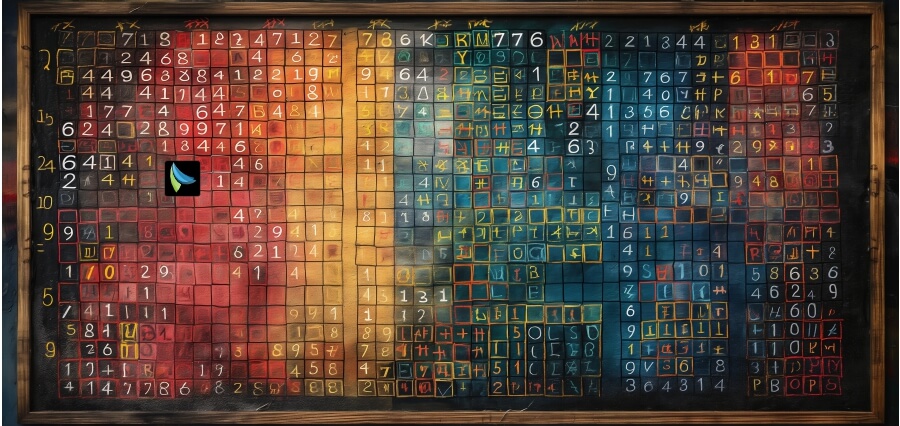The educational landscape continually shifts under the weight of two strong contenders: STEM (Science, Technology, Engineering, and Mathematics) and STEAM, which includes Arts. Both methods of teaching students will have to adequately prepare them for the future, and though the approaches share common goals, the focus and implementation differ. Understanding these differences may help educators, policymakers, or parents optimize outcomes, especially in mathematics.
Introduction to STEM and STEAM
STEM education was conceived early in the 2000s to fulfill the growing number of graduates required in the sectors that include health care, technology, and engineering. National Science Foundation observed the need to develop a curriculum that would major on learning through inquiry and its real-world applications.
STEM Major aims at honing students’ critical thinking skills through direct and logical analysis. According to the U.S. According to the Bureau of Labor Statistics, jobs in STEM fields are projected to grow by 8 percent from 2019 to 2029, much faster than the average for all occupations.
Conversely, STEAM assimilates the base developed by the base of STEM but introduces the arts into the curriculum. Incorporation is done with the objective of fostering creativity and innovation skills along with technical skills. The promotion of arts integration makes the students step out of the box, think from different angles about problems, and approach things from various perspectives. A study published in the MDPI journal reported that the students taking STEAM education possessed more creative skills than the students taking traditional programs for STEM education.
Differences in Learning Outcomes
The first difference that stands out between STEM and STEAM is learning outcomes. Indeed, both approaches to learning posit more inquiry-based learning but in different ways. For example, STEAM propels more aspects of collaboration, communication, and creativity compared to the typical STEM classroom where students may spend more time trying to solve mathematics problems logically. For instance, they might compute projectile trajectory using formulas obtained from physics.
In a STEAM learning environment, implementation of design for a catapult that is supposed to launch projectiles at precise angles could be a natural aspect. What’s amazing is that the students would then make an artistic rendition of their designs. This way, students’ express ideas creatively while reinforcing mathematical concepts. Incorporation of arts into STEM studies can help enhance student engagement and retention of complex concepts. Several research studies have drawn this conclusion.
Mathematics in the Context of an Artistic Design
Mathematics constitutes an integral part of the curricula within both STEM and STEAM. In a general STEM-based curriculum, mathematics is typically tackled as a standalone subject about which students would memorize formulas and procedures to solve various problems.
This can lead to rote memorization rather than the actual understanding of what is occurring. For instance, the student might remember how to handle quadratic equations and may not understand exactly how such equations could be used in practical contexts.
STEAM education encourages mathematical application in broader contexts, outside the accepted conceptual approach. Use of art and design thinking can be integrated in mathematics lessons to help better understand how basic principles apply to everyday life.
By using architectural projects or any other application of art in geometry, for example, students will derive better meaning in angles, shapes, and measurements. A study released by Education Week shows that 75% of respondents that were teachers said that infusion of arts in math lessons will actually enhance student understanding.
Advantages of Implementation of Arts in Education
The implementation of arts in school education proves to bring many benefits beyond creativity. To mention a few:
- Improvement in Problem-Solving Ability: The art encourages divergent thinking, letting students generate more than one solution for a single problem.
- Effective Expression of Ideas: Through the use of various mediums like visual arts or performance, the student is able to explain his ideas much more convincingly.
- More Involvement: Arts are used in math classes that increase engagements in a fun and meaningful way.
Research suggests that there is a higher level of student motivation and engagement in schools that have curricula under the umbrella of STEAM, compared to those with no such program, instead taking only STEM.
Obstacles to Implementation
Although STEAM education comes with a long list of advantages, implementing such education has proved quite challenging. Arts integration into core scientific principles turns out to be tough for some educators at times. Some may not get proper training or resources to aid in creative facilitation in their practice. Others would also resist the approach at stakeholder levels by placing traditional academic rigor over creative exploration.
Professional training courses in interdisciplinary approaches to teaching can be of help in facing these challenges. Co-operation with local artists or other organizations can further aid schools by providing resources and knowledge to enrich the learning process.
Conclusion
The debate over STEM versus STEAM is an exercise beyond the realm of academia; its impacts are practical and observed as one looks toward how future generations will address ever more complex worlds. They seem to both prepare students for success in their particular fields, but arts integration within education lends itself to advantages that produce creativity alongside technical skill.
Societies will continue to advance more technologically and culturally, and scholars will need to evolve within a more holistic education framework that also encompasses STEAM principles rather than just STEM principles. This, in turn, will make it possible for the educators to provide well-rounded individuals who have the appropriate critical thinking abilities that can be used to evaluate the real world’s problems.
In short, while STEM provides a good foundation for scientific literacy and technical capability, STEAM enriches that base by enriching creativity and innovation- two prime success factors in today’s highly interconnected world.


















